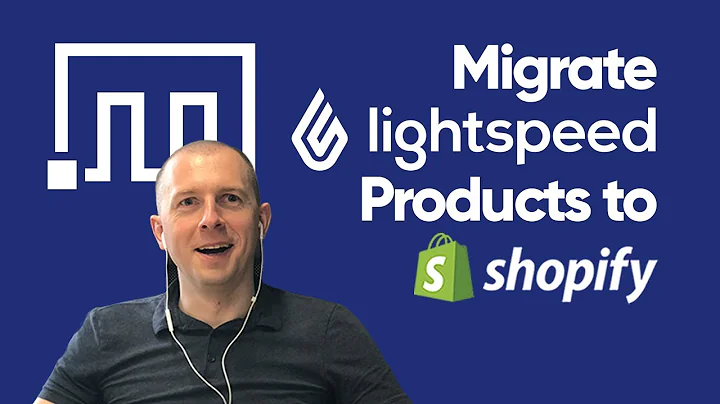Navigating the Changing Landscape of Option Trading in 2023
Table of Contents:
- Introduction
- The Market Structure from 2017-2020
2.1. Awareness of Option Selling
2.2. Advantage of Leverage for Option Sellers
2.3. Low Market Movement and Consolidation
- Introduction of New Rules and Changes
3.1. Decrease in Leverage
3.2. Impact of COVID-19 Crash
3.3. Increased Retail Participation
- Trading as a Zero-Sum Game
- Volatility and High Premiums in 2020
- Stabilization and Lowered Volatility in 2021
- The Effect of Low VIX and Increased Retail Participation in 2023
7.1. Drop in Premiums
7.2. Limited Ability to Go Far OTM
7.3. Lack of Leverage and Difficulty in Trading
- The Challenges of Option Selling in 2023
- Realistic Expectations of Returns
- New Approaches and Strategies for Option Trading in 2023
Article: How the Landscape of Option Trading Has Changed in 2023
Introduction
In this article, we will discuss the changing landscape of option trading in the year 2023. Over the past years, option trading has seen significant shifts in market structure, volatility, and the participation of retail traders. These changes have impacted the ease of generating exponential returns in option trading. We will explore the market dynamics from 2017 to 2022 and delve into the challenges faced by option traders today. Additionally, we will provide insights on realistic expectations and explore new approaches and strategies for successful option trading in 2023.
The Market Structure from 2017-2020
During the period of 2017 to 2020, the market structure and awareness of option trading were different from what we see today. Most traders were focused on option buying, and there was limited awareness and participation in option selling. The high margin requirement for selling options, coupled with the perception of higher risk in option buying, resulted in a market dominated by option buyers. Additionally, the availability of leverage provided an advantage for option sellers, allowing them to sell penny options with minimal margin requirements. The low market movement and consolidation during this period made it easier for option sellers to profit from strategies like straddles and strangles.
Introduction of New Rules and Changes
However, in 2020, new rules and changes were introduced to address the perceived risks associated with leverage and to protect retail traders. SEBI (Securities and Exchange Board of India) mandated a phased reduction in leverage, ultimately eliminating it completely by 2020. This reduction in leverage drastically increased the margin requirements for option sellers, making it more expensive for them to enter the market.
Impact of COVID-19 Crash and Increased Retail Participation
The year 2020 also brought the unexpected challenge of the COVID-19 market crash, which led to high volatility and increased market participation. The lockdown measures implemented during the pandemic resulted in a surge of retail traders entering the market. While the market experienced heightened volatility, the premiums for options were also significantly higher. Traders were able to capitalize on the high premiums and generate substantial returns by selling options. However, the increased retail participation and market volatility also translated into a more competitive and unpredictable trading environment.
Trading as a Zero-Sum Game
It is essential to understand that the nature of option trading is that it is a zero-sum game. In a zero-sum game, the gains of one trader come at the expense of another trader's losses. With a saturated market and heightened competition, generating consistent profits becomes more challenging. It requires traders to outsmart and outperform their counterparts consistently. This reality highlights the importance of having an edge and adopting effective strategies in option trading.
Volatility and High Premiums in 2020
The year 2020 was marked by extreme market volatility, leading to skyrocketing premiums for options. The VIX (Volatility Index) reached unprecedented levels, and the premiums for options reflected this volatility. Traders could sell options at significantly higher premiums, even for options that were slightly OTM (out of the money). The high premiums provided ample opportunities to generate profits. This period was favorable for option sellers who were experienced in managing risk and capturing the premium.
Stabilization and Lowered Volatility in 2021
As we moved into 2021, the market gradually stabilized, and the volatility subsided. The VIX dropped to a range of 25 to 30, and the premiums for options decreased accordingly. However, the premiums remained relatively high compared to pre-2020 levels. Traders could still find opportunities to profit by selling options, albeit with less volatility and slightly lower returns.
The Effect of Low VIX and Increased Retail Participation in 2023
As we enter 2023, we face a new set of challenges in option trading. The VIX has dropped below 15 and typically trades in the range of 10 to 12. This low level of volatility has several implications for option traders. Firstly, the premiums for options have decreased significantly compared to the high premiums observed in 2020 and 2021. Traders can no longer sell options at the same high premiums, making it harder to generate substantial returns.
Limited Ability to Go Far OTM
Moreover, the absence of leverage restricts traders from going far OTM and forces them to stay closer to the current market price when selling options. This limitation prevents traders from taking advantage of larger price movements and reduces their profit potential. Previously, traders could sell options that were two or three percent away from the market price and still collect attractive premiums. However, in 2023, even options that are one percent away from the market price trade at significantly lower premiums.
Lack of Leverage and Difficulty in Trading
The removal of leverage has created additional challenges for option traders. Without leverage, traders are unable to make as many trades and profit from smaller price movements. This restriction reduces the frequency of trading opportunities and hampers the ability to generate consistent profits in a low-volatility environment.
The Challenges of Option Selling in 2023
As a result of the lowered VIX, increased retail participation, and the absence of leverage, option selling has become more challenging in 2023. Traders must adapt to a new reality, where premiums are lower, profit potentials are limited, and stop-losses are more likely to be triggered due to minor market movements. The easy money made by option sellers in the past is no longer readily available.
Realistic Expectations of Returns
In light of these challenges, traders need to reassess their expectations of returns in option trading. While it might have been possible to achieve returns of 30-40% in previous years, a more reasonable expectation in the current market is around 18-25%. It is crucial to adjust strategies and risk management to align with the market conditions and set achievable goals.
New Approaches and Strategies for Option Trading in 2023
To succeed in option trading in 2023, traders must adapt and develop new approaches and strategies. As the market becomes more challenging, traders need to focus on optimizing their edge through thorough analysis, risk management, and the careful selection of trades. It is crucial to identify opportunities in a narrower range and be patient in waiting for favorable conditions. Traders should also consider combining option trading with other trading strategies or asset classes to diversify their portfolio and enhance their overall profitability.
In conclusion, the landscape of option trading has changed significantly in 2023. Traders now face lower premiums, limited profit potentials, and increased competition. The removal of leverage and the impact of the COVID-19 crash have created a more challenging trading environment. However, with realistic expectations, strategic adjustments, and a disciplined approach, traders can still find opportunities and achieve success in option trading. It is crucial to adapt to market conditions, remain informed, and continuously refine trading strategies to stay ahead in this evolving landscape.


















